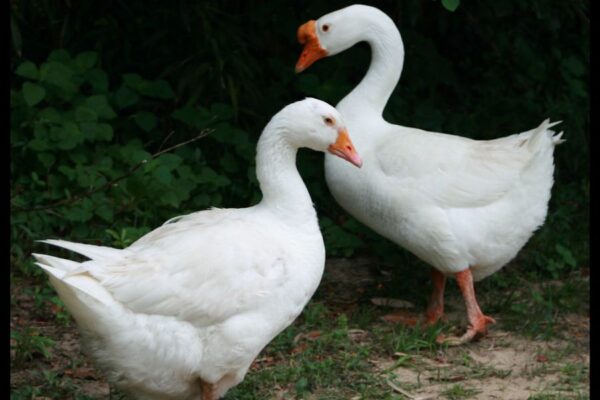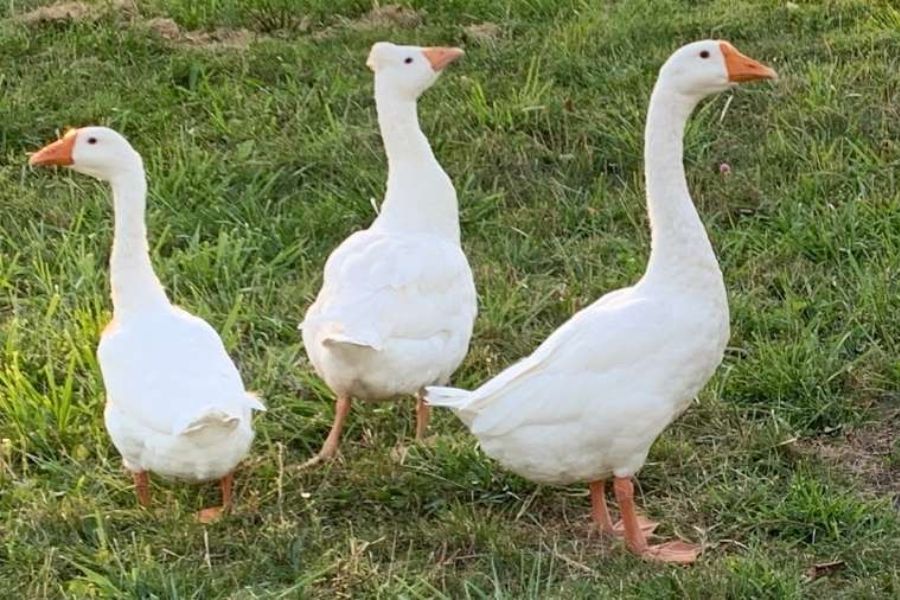Geese
The Story of the White Chinese Geese
Description shown above
On the left: Progress made with them today. On the right: Initial point in 1974.
I recently came across a discussion on social media regarding challenges in breeding Ivory Chinese Geese. In any dedicated breeding project, whether involving goats, cattle, fowl, etc., breeding standards are established to direct the breeding process.
Each standards committee enforces guidelines to assist breeders in breeding to the set standards. Based on my own experience, most standard policies define a breed as purebred when it consistently reproduces true to its characteristics and color for at least 5 generations. The release of the new breed or variety policy by APS (Australian Poultry Standards) in 2015 supports this principle.
In any breeding program, success hinges on the initial breeding stock you choose or start with, and the dedication to adhere to the established standards. I want to emphasize the importance of patience and meticulous breeding efforts when aiming for specific standards. Due to stringent border controls, our access to new breeds and bloodlines is limited, thus, we work with what resources are available.
I founded a lineage of Ivory Chinese Geese in Australia during the early 1970s by breeding a distinct line of Ivory Chinese through a mix of Brown Chinese geese and Embden geese. The main purpose of this endeavor was to maximize egg production for my commercial breeding venture that yielded 1500 to 2000 goslings annually. I opted for Chinese geese due to their higher egg output and Embden geese for their weight, as processors favored processing white-feathered birds.

Impressed by the quality of Ivory Chinese geese, I decided to breed a second line for leisure purposes. Fortunately, I encountered a woman who had maintained a group of Brown Chinese geese for over three decades and assured me that no new blood had been introduced except for a curious occurrence where this flock of 30 Brown Chinese geese unexpectedly produced 5 pied goslings. Without understanding the origin of this pied variety, I acquired the entire flock, thus establishing a second line of Ivory Chinese geese from the Pied Brown Chinese geese. Several decades later, I am still breeding pure Ivory Chinese geese in accordance with APS2 guidelines and have achieved success in exhibitions with this lineage.
In the past, I showcased my Ivory Chinese geese in the “any other variety” category at the Sydney Royal Easter Show. During this time, RAS Councillor David White approached me expressing the RAS’s intention to establish a dedicated class for Ivory Chinese geese in the show, seeking my endorsement.
As a result, Ivory Chinese geese have been incorporated into the Australian Poultry Standards since the initial publication. It is gratifying to witness the evolution of this goose breed over the years, to the extent that high-quality pure Ivory Chinese geese are now prevalent across Australia.

